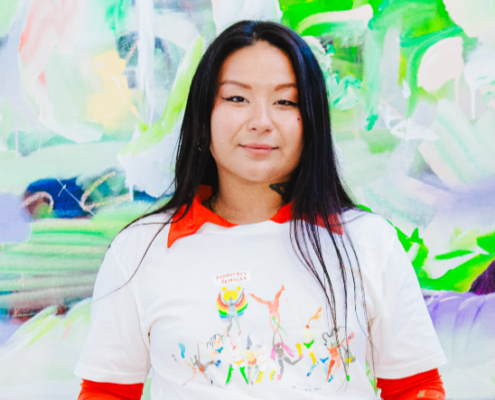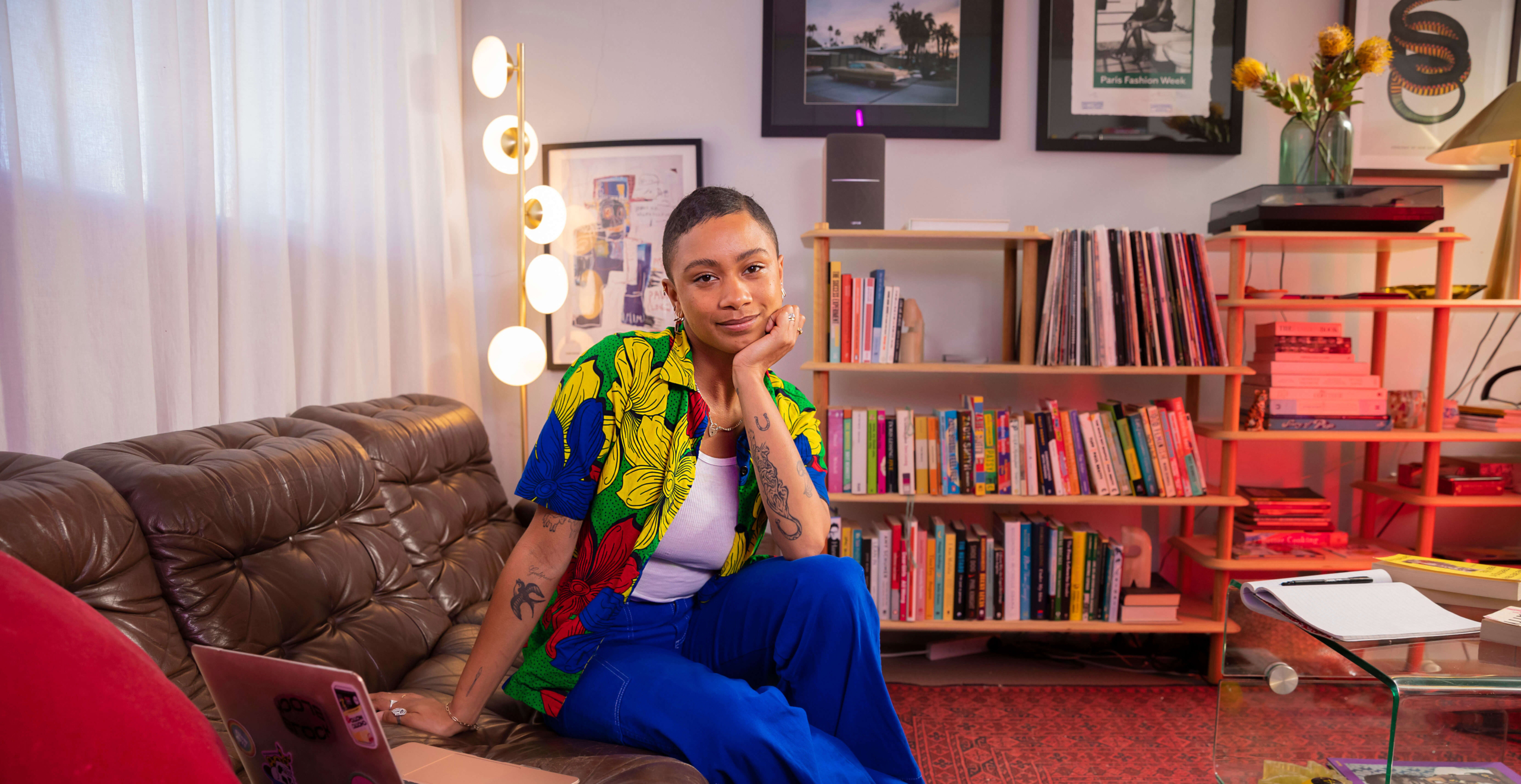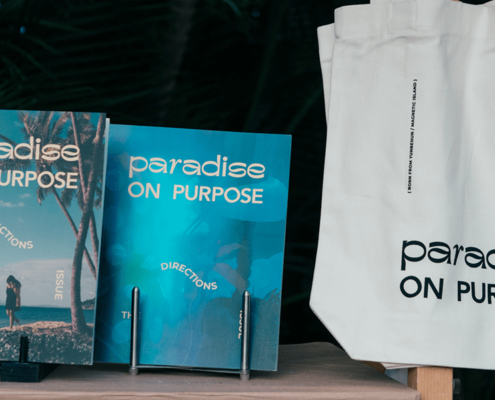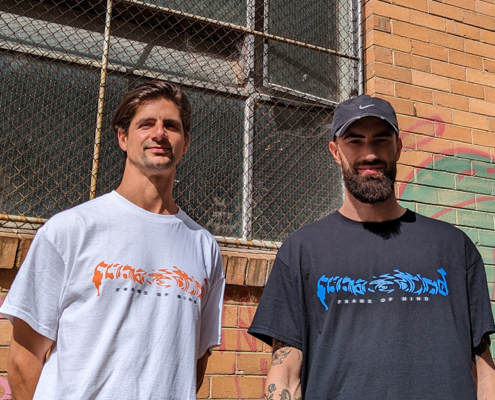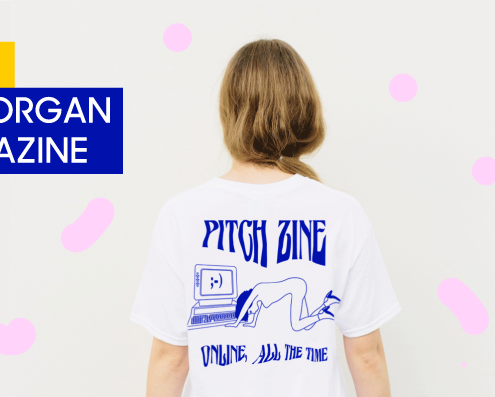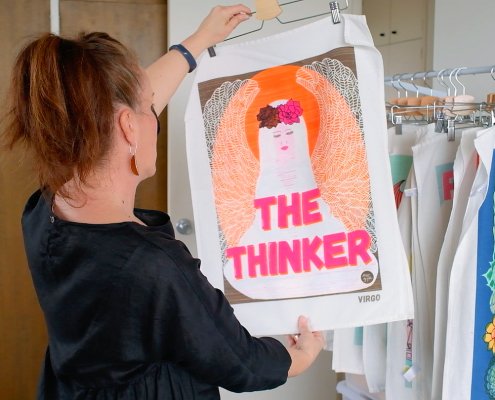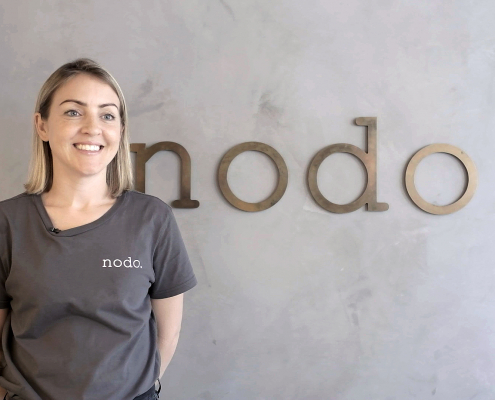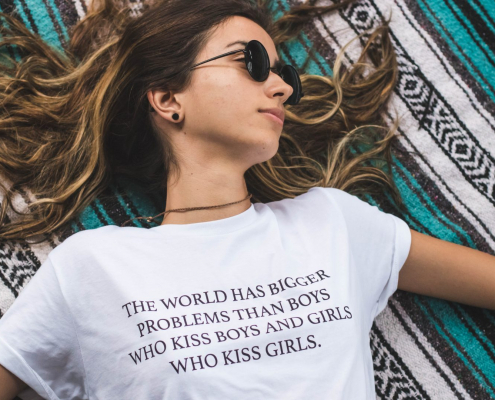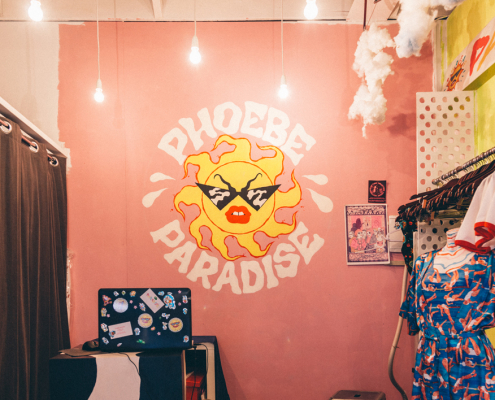Words and Terrible Photos by Athalia Foo
We’re not going to lie – we love our job but it can be pretty tough work sometimes! As well as chatting with all our unique clients, setting up orders and working on designs for print, our team still has to find time to print all the amazing new orders that come in every day.
While we usually shine a spotlight on our awesome clients who do awesome things, this week we thought we’d highlight the everyday activities of one of our own, so you can learn a little more about the ins-and-outs of how The Print Bar team take your design from idea to rad new t-shirt!
Meet Jess Lenton– a talented production and interior designer, self taught 3D printer and one of two Print Bar digital print managers. In this interview Jess takes us through what exactly she does every day, the unique intricacies of her job and some digital printing fun facts you may not have known about!
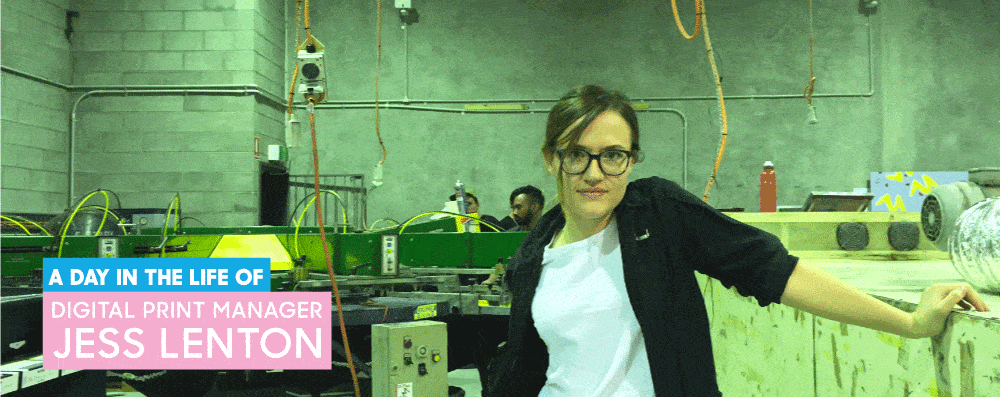
How did you come to work at The Print Bar? What were you doing before?
I was freelancing as and interior and product designer part time, and doing other part time jobs when Ellie Anderson, who was working here at the time, heard we were hiring and called me up immediately. I started here part time, and realised I loved the job, and I eventually progressed into a full time position as a digital print manager.
How do you find working here? How is it different to other jobs?
I really enjoy the challenge here! It sounds cliche, but getting a production line to run smoothly and efficiently, getting a product made from start to finish and sent out to clients is a great challenge. Obiviously having had production experience before, I knew about production processes, but I had never had the hands on ability to do it from start to finish nefore. What I love is being involved on the ground level in the production process – being behind the scenes when it comes to creating our prints, and managing the team. Making sure everyone is in the right role for them and working together cohesively – I love working with people.
Walk me through an average day for you as a digital print manager?
No day is ever the same! I get in in the morning and the first thing I do is check in on our morning print crew – usually they start pretty early. I check in and see if there are any problems, how the production volume for the day is going, how many rush orders and general orders we have, and making sure that the first stages in the production process – stock collection and print preparation – are on target to getting their their work load and the most important orders to printers as quickly as possible.
After this I check if there are any large digital orders to prioritise for the day, and I organise a time for the job to be done, making sure the correct printer for the job is aware of it and has a handle of what needs to be done.
Then I get stuck into printing myself! We have daily targets when it comes to digital printing to make sure everything reaches our clients in time. We set daily goals to dictate what needs to be printed and sent, which includes carefully scheduling regular orders and the constant level of rush orders that pop up through the day. That pretty much continues all day until our couriers come by, so we print like crazy until then. It quietens down around 5pm, so I’ll take this time to sort out how we went that day and what our goals are for the next day – scheduling large and priority orders for the next day, compiling any issues that may have arisen during print and assessing how we went that day.
What common issues do you run into in your average day?
Bad artwork is a big one – it’s common for clients to send in low resolution or low quality artwork that doesn’t print as well as you think it will. Usually, if it’s particularly bad, we get in touch with clients to see if they want us to fix it up, or if it’s a more simple fix one of our graphic design gurus will fix it straight away. We spend some time fixing artwork.
Another problem is general print problems, which are sometimes unavoidable. If it’s possible we try to fix the print on the spot; or, if the job is much harder or not able to be fixed then and there, we usually contact clients to let them know we may need new artwork or new stock. Human error is common throughout the process, but we try and pick it up along the way, so if there are wrong sizes, print errors or poor quality artworks we try to sort it before it hits the print floor.
Of course suprise orders can sometimes affect production, like if we have a high volume rush orders. But we make it our focus to prioritise rush jobs each. Machinery problems also occur sometimes, so if this happens we just have to fix it as best we can as we go and keep production rolling. (For Design Tips check out our Top 10 Design Tips here)
What’s the best part of your job?
The best part of my job is working with The Print Bar team to get the job done. We have a common goal, and we work together to hit those goals. We also work together to create a happy and fun work environment; even though everyone here works super hard every day this is a job that all of us feel you can also have fun in, and have fun together, both during and outside work.
You mentioned your background in production design and interior design. Can you tell us a bit a bit about what you’ve done in the past?
I graduated with a degree in interior design from QCA, and for the first few years I worked as a commercial interior designer predominantly in museum and exhibition design. At the beginning of 2013 myself and acreative studio (Kuuki) opened a space “The Inventory” in the Queensland Museum. The Inventory was a semipermanent community-designed space in the museum created to educate a broad demographic, from kids to adults, on sustainable design and creation. We held workshops and talks with different creatives in Brisbane and around Australia.
I have always had a passion for production and furniture design in particular, so during my time freelancing I took on interior jobs but also created my own unique product designs. I exhibited these all over Australia
Would you share with us the products you designed that you’re most proud of?
My proudest project are probably the Temari Bamboo ply wood lights I created (pictured). Designed to be flat packed, the idea was to look at both sustainable materials and production methods, as well as simple manufacturing methods to make creating the light shades cost effective and accessible to buy a sustainable design. I worked with some local Brisbane manufacturers, sourced ply from Melbourne, and found the best way to cut the ply to fit together to make the design work, and get the lights production ready. This design has been in a couple of shows (such as Fringe Furniture in Melb). I’ve mainly been involved in designing my own products, designing for others, and outsourcing my skills in CAD and Rhino (3D Printing). I also have a 3D printer which I have taught myself to use, and I’ve printed some smaller 3D designs, like jewellery and smaller homewares.
(Image courtesy of Jess Lenton)
How do you feel your skills in production design and interior design helped you to be a skilled digital printer?
My skills and knowledge in using technical digital programs, like the Adobe Suite, has definitely helped greatly; even my CAD skills have allowed me to learn creative programs quickly. Also being able to understand how production processes work has been of huge assistance. I understand and am fascinated by production processes already, and I also have a serious interest in the business side of things – profit margins, time frames, making a creative idea viable to produce, as well as how production works from start to finish have all worked together to help me to understand and work the job. I a really hands on person, too, so being able to get my hands dirty is a really great thing for me.
This is a super personal question – because of your interest in sustainable production, how do find it working here?
It opens your eyes to the reality of the production process and inevitable waste. Regardless of what it is, there are so many steps to having something produced, and its easy to focus on one step and say that’s sustainable, when there are a whole bunch of other steps involved which may negate how sustainable a process really is. I’ve seen it happen with other business where they will promote how green their production line is, but I think a lot of stuff is green washed and only some steps or factors are looked at. That, unfortunately, doesn’t make that manfuacturing process totally sustainable.
I think it’s important to look at the whole process, and minimise waste. Here at The Print Bar we’re always striving to minimise waste and save materials, like ink and garments. We have a good idea of where our suppliers get their products from, too, and that is one of the reasons we choose to work with them. Minimising waste through the process is difficult in any production process, but we are always striving to improve. We do reuse and reclaim a lot of our waste, and recycle – misprinted shrits shirts become rags to be reused in screen printing or test printing, and all our ink cartridges are recycled with Planet Earth. We try to ensure the very minimum goes to waste, and will try and save or recycle everything we are able to!
What are the main misconceptions about digital printing and custom printing you’ve discovered in your time as a digital printer?
I had no ‘conceptions’ before I started to be honest. I had no idea what the difference was between digital printing and screen printing, but [expected and realistic] colour accuracy is one that we run into regularly. We work really hard to produce an accurate colour representation, but the exact same colour result is not always possible. Some colours you just can’t achieve at all in digital printing (ie: neons and metallics). I think many people think you can have something printed that is exactly the same as your digital image, but sometimes you need to work with your printer to get the outcome you want.
Another is that digital printing is difficult! You always have to print more than one shirt. For us it’s quick and easy, which is why we have the ability to do one offs t-shirts; but it is costly, and isn’t as simple as just pressing print.
Also, the way that ink goes down onto white garments as opposed to coloured tshirts results in a different print outcome. How I usually explain it to clients is our digital printers are like a gigantic at-home printer, except we have enormous ink cartridges that pump out ink onto the garments instead of onto paper.
What are your top tips to get the best of your digital prints?
- Make sure your image is really high resolution (min 300 DPI) and looks as close to the result you want. So make sure the colours you upload are what you want, that the crispness and brightness are what you are after and the positioning of your artwork on the garment is how you want it to print. That takes away a lot of the guess work for the printer who receives and edits the artwork.
- If in doubt, or if you want a particular print size or placement, leave notes on your order.
- Look at the designs on shirts you already own for print sizing and placement – if you need a particular result it’s good to know and easier to picture. Measure it on your chest if you are unsure.
- The higher quality of the garment you choose the better your print will be. The higher priced garments do usually have a better [smoother] weave to the fabric which is ideal for printing, so just remember when you place your order that a print is only as good as the fabric it’s printed on.
Lastly, what’s something people don’t know about you?
I’m a pretty open person. I guess the thing would be, I wish I lived in the 80s, and I love disco pants – but everyone already knows this. I actually don’t keep anything from anyone, so there’s not much I haven’t shared already. If I think of anything I’ll let you know!
Now you know more about digital printing why not start your own design?
Have a custom digital printing question for us? Why not Facebook or Tweet Us!

